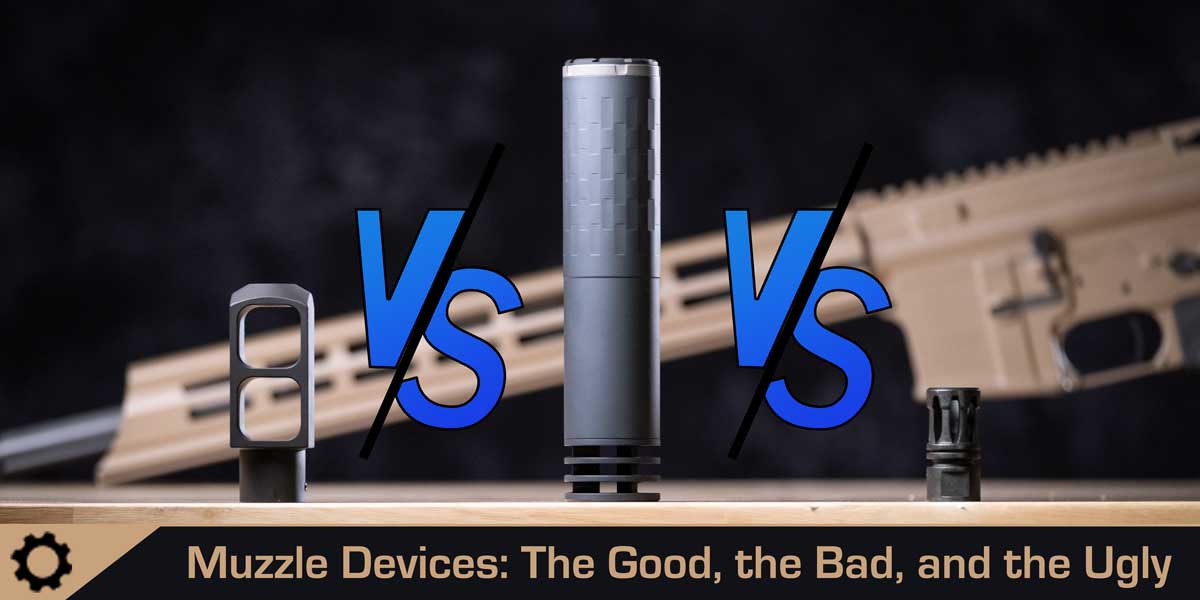
Choosing which muzzle device to attach to your centerfire rifle is one of the most critical yet least understood aspects of a rifle build. Mired in pseudo-science, hyperbole, and masterful marketing, it can be difficult to separate fact from fiction. Truth is, whether it’s a brake, flash hider, or suppressor they all do the same thing. They each modify flash, blast, recoil, and in the suppressor’s unique case, sound. How they accomplish each task and to what extent may differ, but the end result is the same; one or more of those characteristics becomes altered. Which of these altered characteristics is most critical is up to you, your rifle, and what you do with it. Not how it looks. If your rifle is mostly a social media photo prop it may not matter. But if you are using it in the real world these differences can make all the difference.
Muzzle blast, more than a distraction.
A recent article at SHWAT™, Can Shooting Cause Brain Damage? points out the effects of repeated attacks on your brain from the pressure wave generated by a typical centerfire rifle. The military began looking into this with the 50 BMG rifle however they’ve shifted their focus to the smaller calibers. They are currently looking specifically at the damage caused by the equivalent of a pressure wave generated by a standard M4 with an A2 flash hider, and it’s not good. Critically, it seems hearing protection is not much help with this as it may only protect your hearing but not your brain from the concussive blasts hitting it with every trigger pull.
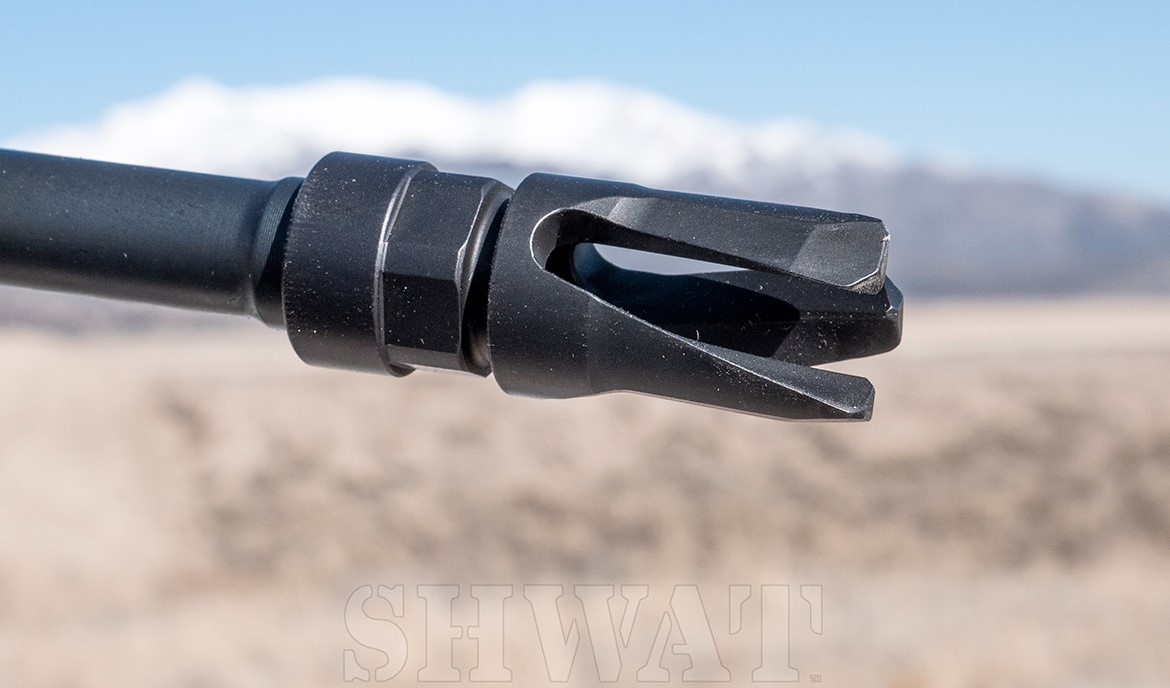
Shooting nearly 1,000 rounds of 5.56mm per day for a week using an M4 in a primarily CQB environment my hearing was fine. However, I was nauseated and light-headed by the end of the day. Picture a “punch drunk” sparring partner after getting beaten about the face and head all day; the padding keeps you alive but the damage is still there. Short term damage like this almost always heals perfectly, long term on the other hand can be devastating.
Muzzle blast does the same thing. If you can feel the blast of the shot damage is occurring whether you are behind the rifle, next to it, or in the same room or vehicle as the shooter. Indeed, one of the things currently being studied is “second-hand blast”. Now we know that you can suffer damage without having fired a shot. Now, imagine thousands of rounds fired all around you in combat even with hearing protection and the effects this would have on a brain. Then imagine being in your bedroom firing a round out of your eight-inch barreled “pistol” with a brake on it with your loved ones nearby. Muzzle blast is not just an annoying distraction as its dangerous effects can be both immediate and cumulative. Mitigating it is important, enhancing it is, in my opinion, just stupid.
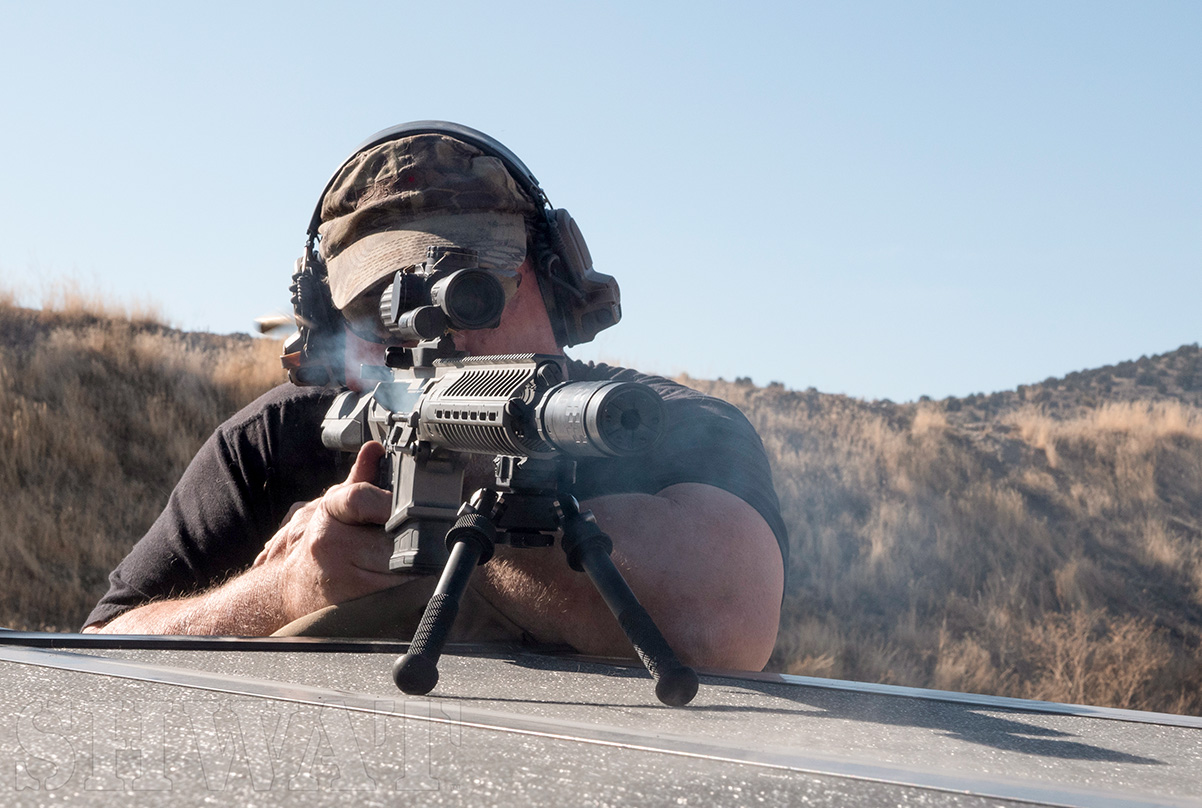
The only current solution is to direct it elsewhere as you really can’t eliminate it. Suppressors can mitigate it, but the laws of physics are not negotiable. Sadly, much of what is offered today does the exact opposite in fact; it directs the muzzle blast back at you, or at the poor schmuck next to you, all for the sake of less recoil. And yes, I hear the “it makes it easier for new shooters”, all the time as that is great marketing if you sell muzzle brakes. But if that’s your loved one shooting, it’s pretty stupid.
Risking brain damage for the sake of “recoil mitigation” is about as ridiculous as it gets, don’t do it. Devices such as suppressors that direct blast forward and away from the shooter are best and unless circumstance dictates otherwise this should always be your first priority if you can legally own and afford one.
Recoil? Man up, or shoot little rifles!
Early recoil mitigation attempts were first used on large bore heavy recoiling rifles, rendering them usable. That being said, professional hunters have been killing prey and predators with nothing attached to the end of their heavy recoiling rifles for a hundred years. They understood that you simply manned up, leaned in, and prepared yourself for what was coming which is still the case today for the most part. Muzzle brakes can mitigate recoil considerably, but it comes with a cost: muzzle blast. It’s why many Professional Hunters (PH) won’t allow muzzle brakes especially for big game abroad hunting. Even professionals hunting large game at long range are beginning to prohibit them. Basically, if you can’t hit anything without it don’t use it, get a smaller rifle or use a suppressor and concentrate on shot placement. Amazing idea, more people should try it.
Military rifles were next to receive recoil mitigation modifications and short of a suppressor that was the only way you were ever going to field a 50 BMG, .408 Cheytac, or even a .338 Lapua. As long-range shooting became as much of a hobby as a profession the muzzle brakes filtered down to everything else. Once they took hold in the competition world they became the norm. Nothing, including suppressors, does a better job of eliminating barrel movement from recoil than a brake. At longer ranges, the less the barrel moves the easier it is to see your hit (or miss) on the target and the faster and more accurate your followup shot potential.

On the short-range, it is all about speed, and if the rifle does not move you are quicker. Outside of those environments, it is nothing but a swap; recoil for blast. And just to be clear, suppressors DO NOT eliminate, or even in most cases mitigate recoil. Every top-level competitor knows this as they generally add recoil while mitigating pressure, making them “seem” softer. They want as little movement as possible from shot to shot and nothing does that as a brake will. Once again the laws of physics prevail. You can’t funnel blast into a chamber against a baffle and decrease recoil. Backpressure means more recoil, and with few exceptions, all suppressors add backpressure and recoil, the smaller the end of the suppressor the greater the effect.
So, what about me? The first thing I do when testing rifles is to remove the brake if it has one attached. I will no longer shoot anything with a muzzle brake. If I can’t suppress it, shoot it bare muzzle, or with a device that sends the blast away from me, I will not shoot it. My health is worth a lot more than what you get paid for an article. Now, these VF-18’s from XD DEV Group sit on any rifle that I field that is not suppressed. Their recoil mitigation is about the same as with an A2 flash hider, but there is zero blast aimed towards the shooter or anyone else nearby. More companies are starting to make these kinds of flash hiders, so they can only get better over time.
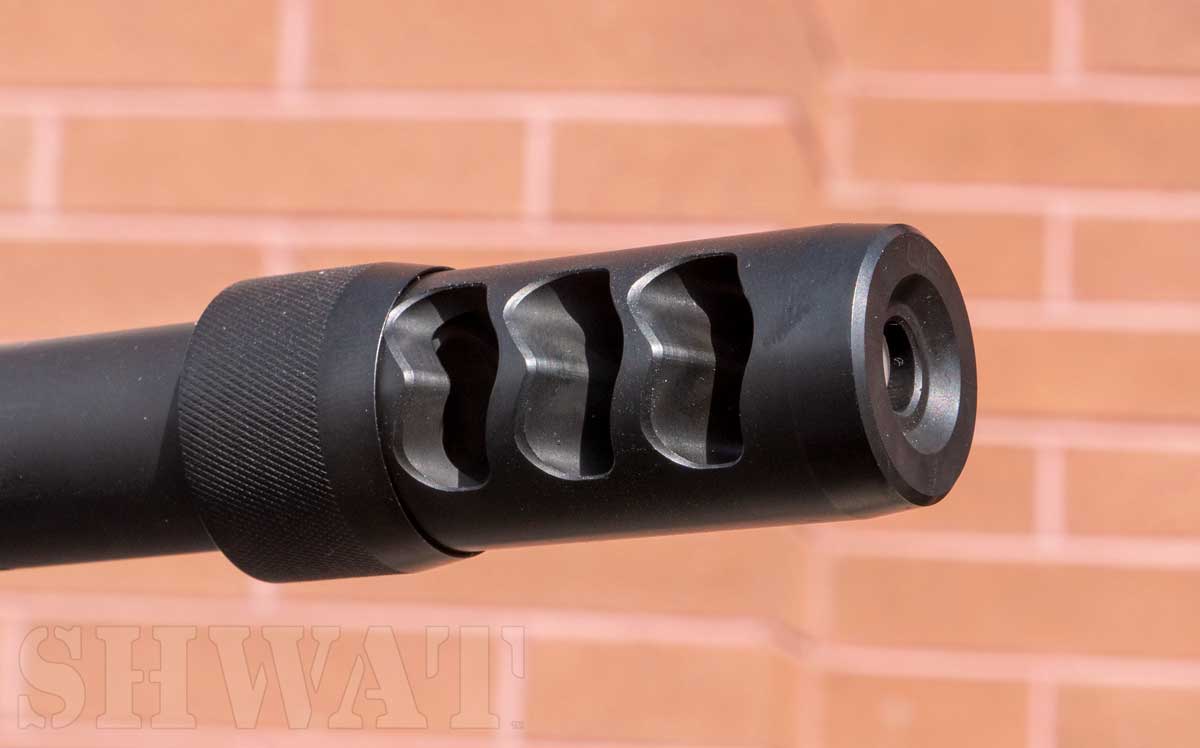
Flash, who needs it, who cares?
Looking at most social media videos about muzzle devices you would think muzzle flash is desirable. Afterall creating a huge ball of flame out of the end of your barrel can be pretty fantastic to see. If your goal is to take and share cool photos, fair enough. I have a few such photos myself. For some, this visual requirement is near the top of their priority list. However, if you fight with your rifle, meaning bullets going both ways, all that flash can get you killed. Other than destroying your and your partner’s brain, it’s also why most military arms don’t use brakes. They create visual flash and provide a great target for the enemy to shoot at.
Multiple members of Special Missions Units tell me that flash is high up there on the list of things you don’t want your rifle to have. That is, right after having it turn itself into a “jam-o-matic”. So what about using suppressors? One must be choosy. The subdued sound of a shot is often of little or no consideration. That proves more of a side benefit.
A suppressor that turns their rifle into a gunked up mess that won’t run is useless no matter how quiet it may be. A well-suppressed rifle with no blast that runs for 100 rounds and then promptly has to be cleaned is a liability, not an asset. The same holds true if the backpressure makes your nose bleed and eyes run from the excess gas thrown back at your face. For those who shoot their rifles just a couple of times a year, it may be no big deal. Still, one should consider all of the pros and cons.
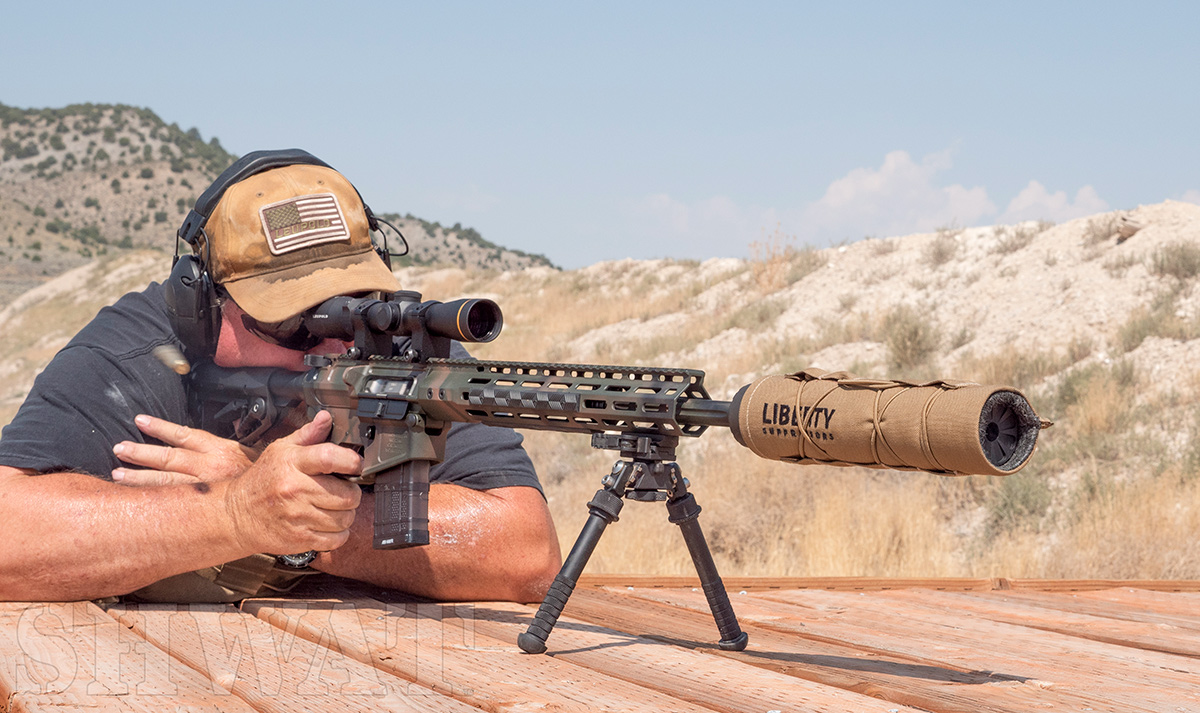
For many, flash is all but meaningless but it can be a severe distraction in a fight if left unchecked. Brakes in general tend to generate flash or make it more pronounced while flash hiders do the opposite. They just don’t mitigate recoil at all and do little to direct blast. Suppressors can mitigate flash as well but not always perfectly. So, if that is an issue for you don’t assume a suppressor will eliminate your flash signature entirely. Having tested a hundred or so suppressors over the years I can tell you two things. There are some that create little flash (with the correct ammunition), and others that are worse still than a brake. And therein lies the rub. Unlike the other factors, the ammunition used, barrel length, and the atmospheric conditions present a greater impact on flash than the muzzle device mounted on your rifle.
Teaching night classes you see all kinds of flash signatures. You can all but eliminate flash when using a 5.56mm AR with a 14.5” (or longer) barrel with an A2 flash hider and low flash powders in your ammo. That same combination with a 10.5″ barrel creates a fireball the size of a volleyball. But, that can change depending on if it’s 105 degrees or below zero when shooting outdoors. Generally the longer the barrel the less the flash. Ammunition using low flash powders can make a huge difference as well, even with shorter barrels.
Muzzle brakes just send the fireball back towards you, or towards your partner. They can also send it forward but still creating a fireball often filled with debris and unburned powder. Suppressors can suffer the same fate except different designs do a better job of controlling it. The faster you pull the trigger the more flash you get, something to remember if people are shooting back. Full auto dumps make for great social media video, sure. Otherwise, they generally prove more of a liability than an asset. The military consequently discourages their use. That is why they have belt feds.
Bottom Line
It’s pretty simple. What you attach to the end of your rifle is important. It may be critical and should not be an afterthought. How it looks means nothing. In fact some of the best devices out there are ugly. It’s a sad commentary on the ignorance of general buyers who care more about how something looks than how it functions. It still surprises me how firmly our industry has succumbed to the “form over function”, or what amounts to “body shaming”, ever so prevalent in our society. Problem is, sex sells, even in the gun industry. Always has always will. It may get you killed, but at least you’ll look very cool in the meantime. Maybe the best example is “skinny handguards”, some of the most useless kits ever developed. Call it the anorexia of the gun world, but I digress, that is another story for another article.


I use these Krikov types on all my gas guns. Can’t attach a pic sooooooo……….
http://cx3tactical.com/product-category/muzzle-brakes-12-28-tpi-223-5-56-etc
Internals CAN be modified to act as the blast chamber in a can to give more back pressure to short barrel AR pistols. They are steel and are heavy (3.2oz) but direct that LOUD pistol blast downrange. They do a good job of containing the muzzle flash when modified.
One look at the internals and you’ll see what I mean “modified”.